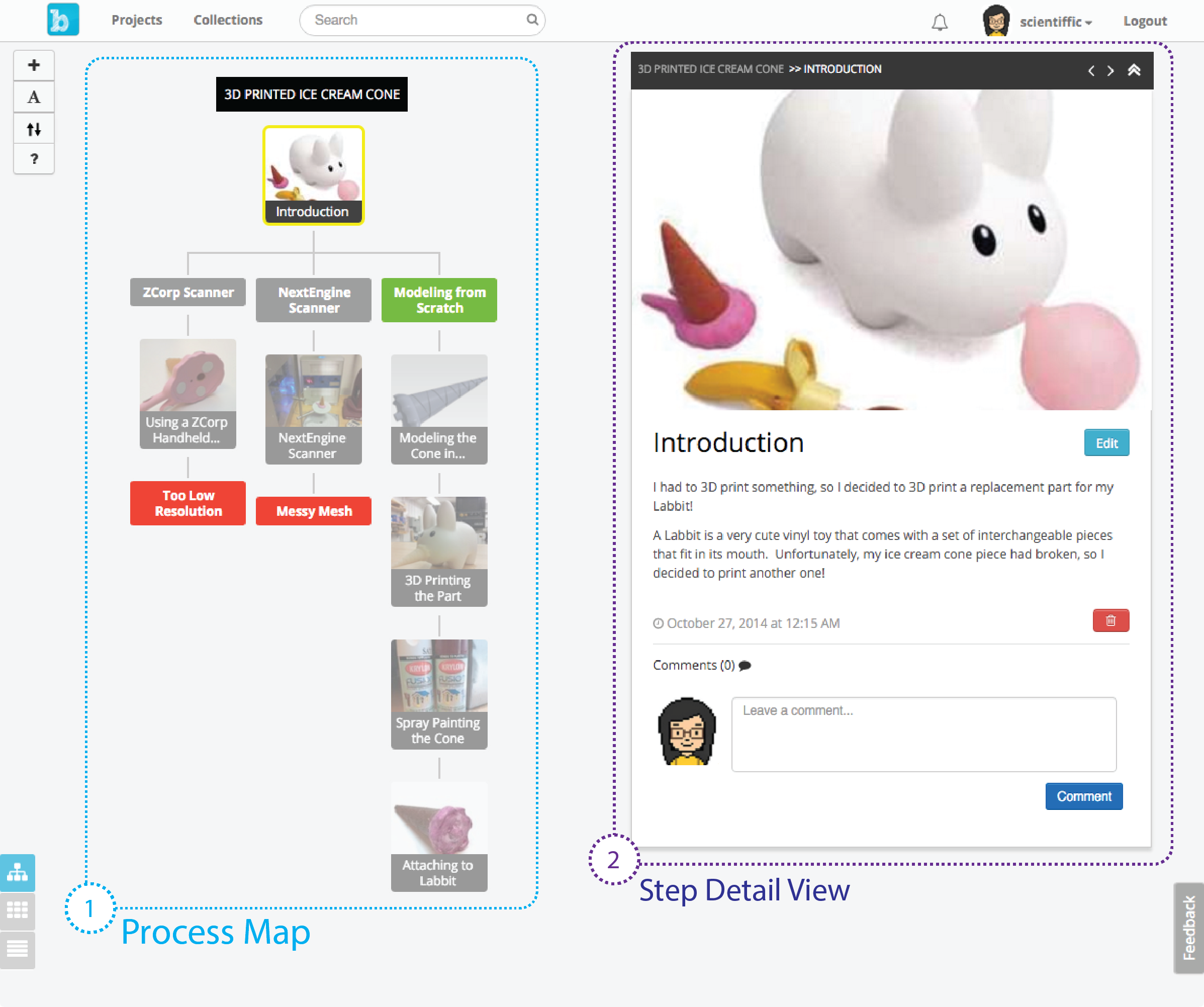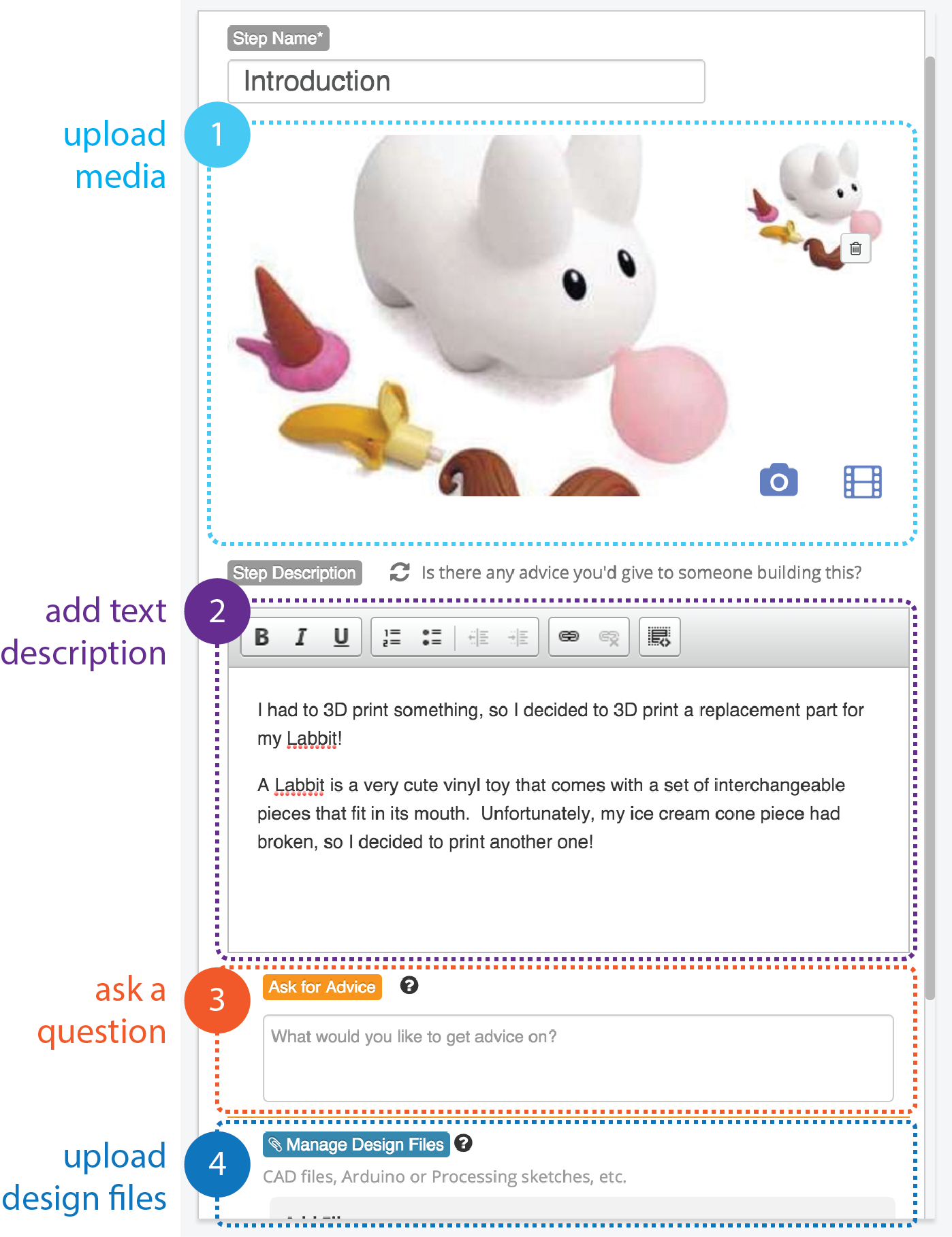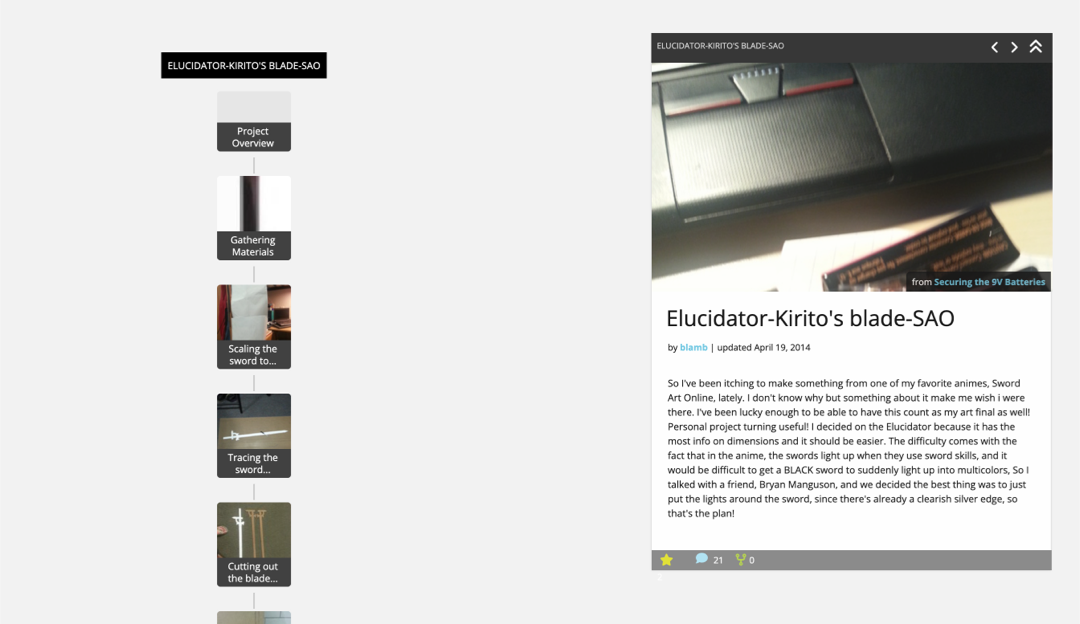Build in Progress is an online community for makers to document iterative design practices.
I developed Build in Progress as part of my PhD research at the MIT Media Lab, partnering with K-12 schools, after-school programs, and university design courses, with over 2000 registered users.
design principles
Making often involves an iterative cycle of testing and re-designing in response to setbacks as well as serendipitous discoveries. Yet, this iterative process is rarely shared in step-by-step DIY tutorials
What might documentation look like that captures the full story of how a project was created?
I started the project with a several goals for supporting process-based documentation:
• Bring transparency to the design process
• Encourage feedback on work-in-progress
• Create opportunities for authentic reflection in support of learning
While the interface in this video is outdated, this early video for the project still captures the overall mission of the platform:
interface
A sample project page on Build in Progress
A project on Build in Progress consists of steps that can be organized into branches by clicking and dragging step "blocks" in what was called the "Process Map."
The Process Map enabled you to see the overall structure of a project to more easily see iterations.

A project page on Build in Progress consists of the Process Map, a visualization of steps in a project, along with a detail view for viewing information from a single step.
Each step could contain images, videos, and text descriptions, along with attached design files. Users could ask for advice to pose a question to the community:

Asking for advice on a project page
Active questions would then be displayed on the homepage so anyone visiting Build in Progress could help out if they had ideas.

Questions were featured prominently on the homepage
For a full build log, check out the very meta Build in Progress project on Build in Progress.
examples
Below are some examples created by members of the community (and one by myself!) that I think exemplify the spirit of the site and also show the affordances of the branching interface. (Note, the site is no longer available but I have archived these specific projects)
 Designing and 3D Printing Chess Pieces: A high school student's 3D printing project.
Designing and 3D Printing Chess Pieces: A high school student's 3D printing project.
 Spin Turntable System
: My own project documenting the design of the Spin turntable.
Spin Turntable System
: My own project documenting the design of the Spin turntable.
 Tower Defense Arcade Game and Box: A collaborative project from middle
school students creating an arcade game - with great writing!
Tower Defense Arcade Game and Box: A collaborative project from middle
school students creating an arcade game - with great writing!
 Elucidator-Kirito's blade-SAO
: A project from a Computer Clubhouse Alumni showing how peer feedback and can reshape a project.
Elucidator-Kirito's blade-SAO
: A project from a Computer Clubhouse Alumni showing how peer feedback and can reshape a project.
takeaways
Throughout my research, I interviewed learners building projects on the platform and used inductive coding to identify themes around supporting users documenting work in progress:
Facilitating Feedback
Documenting throughout the design process provides new opportunities for facilitating feedback. In a safe and supportive community, opening up about the potential weaknesses of a project invites others to leave constructive feedback. As one user stated,
“It was really helpful to get feedback during the process, as opposed to, “Here’s my final project. What do you guys think?”
Expressive Documentation
Documentation can serve as a venue for creative storytelling rather than prescriptive instructions. The documentation itself becomes a form of creative expression in which the maker can communicate their personal journey of creating a design.
Representing Effort
Because make-throughs capture both successful and unsuccessful experiments, they can be used as tools to communicate the effort that goes into creating. Having space to showcase these efforts can be especially important in educational settings where problem-solving efforts are, in many was, more important than the tangible output of a project.
For in-depth discussion about these themes, check out the paper I wrote for Fablearn.
additional links
Build in Progress archiveFablearn paper
IDETC Paper
Build in Progress: Shutting down and opening up
Github repo